If you want to know about the staircase design or landscape garden or requirements for disabled persons in a building, please click the link.
Introduction
Group housing refers to a type of residential living where several families or individuals reside in a single building or complex, typically sharing common areas and amenities such as parking lots, gardens, and recreation facilities.
The purpose of group housing is to provide affordable and efficient housing solutions for individuals and families. By sharing living spaces and amenities, residents can save on expenses and reduce their environmental footprint. Group housing also provides opportunities for social interaction and community building among residents.

Group housing building design in architecture is a complex and important field that deals with the design and construction of buildings intended to accommodate multiple households. It involves a wide range of considerations such as spatial planning, site selection, user comfort, sustainability, and community engagement.
Importance of good building design in group housing
Good building design is crucial in group housing for several reasons
- Space efficiency: With multiple families or individuals sharing a building, space utilization is critical. Well-designed group housing buildings maximize space usage and create functional living spaces for residents.
- Privacy: While group housing involves shared living spaces, residents also require privacy. Good building design should incorporate measures that allow residents to have their own private spaces.
- Security: Group housing buildings need to provide a secure living environment for residents. Proper building design can ensure the safety and security of the building’s residents.
- Accessibility: Group housing buildings need to be accessible for all residents, including those with disabilities or mobility issues. Good building design can incorporate features such as ramps, lifts, and other accessibility solutions.
- Social interaction: Group housing provides residents with opportunities to socialize and interact with each other. Good building design can create common areas that foster social interaction, creating a sense of community among residents.
In summary, good building design is essential in group housing to create functional, secure, accessible, and social living spaces for residents.
1) Key Elements of Group Housing Building Design
Group housing building design involves a wide range of elements that must be considered to create a successful and functional living space for multiple households. Here are the essential elements of group housing building design:
- Spatial planning: This involves the allocation and arrangement of space within the building to maximize functionality, efficiency, and comfort. It includes considerations such as the placement of rooms, the flow of traffic, and the use of natural light and ventilation.
- Site selection: The selection of an appropriate site is crucial to the success of a group housing building design. The site must be chosen based on factors such as access to public transportation, proximity to amenities and services, and environmental factors such as sun orientation, wind patterns, and soil quality.
- Sustainability: The design of a group housing building should incorporate sustainable practices and materials to minimize environmental impact and promote energy efficiency. This can include the use of green roofs, solar panels, and energy-efficient HVAC systems.
- User comfort: The design should prioritize the comfort and well-being of the residents. This can be achieved through the use of natural light, soundproofing, efficient temperature control, and appropriate ventilation.
The significance of each of these elements lies in their contribution to the overall success and functionality of the group housing building design. Spatial planning, for example, ensures that the space is well-utilized and optimized for the residents’ needs. Site selection ensures that the building is conveniently located and environmentally appropriate.
Sustainability helps to minimize environmental impact and reduce energy costs, while user comfort ensures that the residents’ well-being and quality of life are prioritized. By prioritizing these elements, architects and design professionals can create successful and functional group housing building designs that meet the needs of the residents while also promoting sustainability and environmental responsibility.
2) Latest Trends in Group Housing Building Design
There are several latest trends in group housing building design that are gaining popularity in the field. Here are some of them:
- Mixed-use development: This trend involves incorporating different uses into a single development, such as residential, commercial, and retail spaces. This allows residents to live, work, and shop in the same vicinity, promoting a more sustainable and convenient lifestyle.
- Energy-efficient designs: Energy-efficient designs involve using materials and systems that reduce energy consumption and carbon emissions. This includes using insulation, passive solar heating, energy-efficient appliances, and smart home technology.
- Communal spaces: Communal spaces promote social interaction among residents and can include shared amenities such as community gardens, rooftop lounges, and fitness centers.
- Technology integration: Technology is being integrated into group housing building design in a variety of ways, including smart home systems, energy management systems, and security systems.
These trends impact the design of group housing buildings in several ways. For instance, mixed-use development requires a more integrated approach to design, with consideration given to how different uses will interact and how the building can promote a sense of community.
Energy-efficient designs require careful consideration of building orientation, insulation, and the selection of energy-efficient materials and systems. Communal spaces require designers to consider how the building’s layout can promote social interaction, while technology integration requires consideration of the latest technological developments and how they can be incorporated into the design.
Overall, these latest trends in group housing building design are aimed at creating more sustainable, convenient, and comfortable living spaces that promote a sense of community and encourage social interaction among residents. Architects and design professionals who are able to successfully incorporate these trends into their designs can create buildings that are highly desirable among residents and are more likely to attract attention in the competitive real estate market.
3) Challenges in Group Housing Building Design
Architects face several challenges in designing group housing buildings.
Here are some of the most common challenges:
- Budget constraints: Group housing building design can be expensive, and architects must often work within strict budget constraints. This can limit the scope of the project and make it more difficult to incorporate certain design elements.
- Zoning regulations: Zoning regulations can limit the size and height of buildings, as well as dictate where they can be located. This can make it difficult to find suitable sites for group housing building designs.
- Social issues: Group housing buildings must be designed with the needs and preferences of residents in mind. This can be challenging as residents may have diverse needs and preferences.
- Design standards: Group housing building designs must meet certain design standards, including safety codes and accessibility requirements. Meeting these standards can add complexity and cost to the design process.
To overcome these challenges, architects can take several steps:
- Conduct thorough research: Architects should conduct thorough research on the site, zoning regulations, and the needs of potential residents. This can help to identify potential challenges early in the design process.
- Prioritize design elements: Architects should prioritize design elements that are most important to the project’s success, and work to incorporate these within the available budget.
- Collaborate with stakeholders: Architects should collaborate with stakeholders, including residents, developers, and city officials, to ensure that the design meets everyone’s needs.
- Use technology: Architects can use technology, such as computer-aided design (CAD) software and building information modeling (BIM), to help streamline the design process and reduce errors.
- Stay up-to-date on regulations and standards: Architects should stay up-to-date on zoning regulations and design standards to ensure that their designs meet all legal requirements.
By taking these steps, architects can overcome the challenges of designing group housing buildings and create successful designs that meet the needs of residents, comply with regulations, and fit within available budgets.
4) Types of group housing buildings
Different types of group housing buildings:
- Apartments: Apartments are a type of group housing building where individual units are rented out to tenants. Apartments can vary in size and design, ranging from studio apartments to multi-bedroom units. They often feature shared amenities such as fitness centers, swimming pools, and laundry facilities.
- Condominiums: Condominiums are similar to apartments in that individual units are owned by different residents. However, in condominiums, the common areas and amenities are owned and maintained by a homeowners’ association. Condominiums often offer shared amenities such as rooftop decks, party rooms, and storage units.
- Co-housing: Co-housing is a type of intentional community where residents share common spaces and amenities such as kitchens, gardens, and laundry facilities. While each resident has their own private living space, the community is designed to foster social interaction and a sense of community.
- Dormitories: Dormitories are group housing buildings that are designed to provide affordable housing options for college students. Dormitories often feature shared spaces such as lounges, study rooms, and laundry facilities.
Unique design considerations for each type of group housing building:
- Apartments: Architects designing apartments need to consider how to maximize living space within each unit while also providing shared amenities that meet the needs of residents. They also need to consider how to provide privacy and security for individual units while still creating a sense of community among residents.
- Maximizing natural light and views from each unit
- Designing efficient and functional kitchens and bathrooms
- Providing storage space within each unit
- Incorporating sound insulation to minimize noise from adjacent units
- Designing common areas that are accessible and easy to maintain
- Condominiums: Architects designing condominiums need to consider how to create a sense of community among residents while also ensuring that each unit feels private and secure. They also need to consider how to provide shared amenities that are functional and meet the needs of residents.
- Creating distinct entrances and elevator access for each unit
- Incorporating security measures such as security cameras and controlled access points
- Designing shared amenities that are spacious and well-equipped
- Providing ample storage space for each unit
- Incorporating green spaces and outdoor areas for residents to enjoy
- Co-housing: Architects designing co-housing communities need to consider how to create shared spaces that are functional and promote social interaction, while also providing private living spaces that allow residents to have their own personal space. They also need to consider how to create a sense of community among residents.
- Designing communal spaces that are flexible and can be easily reconfigured for different activities
- Creating a sense of community through shared meals and group activities
- Incorporating sustainable features such as renewable energy sources and green roofs
- Designing private spaces that are flexible and can be adapted to different needs
- Incorporating storage spaces within each unit and communal storage areas
- Dormitories: Architects designing dormitories need to consider how to create functional and efficient living spaces that meet the needs of college students. They also need to consider how to provide shared spaces that promote social interaction, while also providing private areas for studying and sleeping.
- Designing compact and efficient living spaces that maximize the available square footage
- Creating shared spaces that are conducive to studying and socializing
- Providing ample storage space for each student
- Incorporating technologies that support modern learning and communication
- Incorporating security measures such as access control systems and on-site security staff
Overall, architects designing group housing buildings need to consider a range of factors such as space efficiency, privacy, security, and accessibility, as well as the specific needs of residents for each type of building. By considering these unique design considerations, architects can create group housing buildings that provide a safe, comfortable, and affordable living environment for residents.
5) Design considerations for group housing buildings
Design considerations for group housing buildings:
- Space efficiency: Group housing buildings need to be designed to maximize space efficiency, particularly in urban areas where space is at a premium. Architects need to consider how to make the most of each unit, as well as shared spaces and amenities.
- Privacy: Privacy is a crucial consideration in group housing buildings. Architects need to design spaces that allow residents to have their own private areas and minimize noise and disruption from shared spaces.
- Security: Group housing buildings need to be secure to provide a safe living environment for residents. Architects need to consider how to design buildings that prevent unauthorized entry, protect residents from external threats, and provide secure areas for residents to store their belongings.
- Accessibility: Group housing buildings need to be accessible to all residents, regardless of their physical abilities. Architects need to consider how to design buildings that are accessible for people with disabilities or mobility issues.
Examples of how architects have addressed these design considerations:
- Space efficiency: Architects have addressed space efficiency in group housing buildings by designing multi-functional spaces that can serve multiple purposes. For example, a living room in an apartment could double as a workspace or guest room.
- Privacy: Architects have addressed privacy concerns in group housing buildings by designing layouts that separate living spaces from shared spaces. For example, some co-housing communities have individual units with their own private entrances and balconies, while also providing shared spaces for socializing.
- Security: Architects have addressed security concerns in group housing buildings by incorporating secure entryways, surveillance systems, and secure storage areas. For example, some student housing buildings have keycard entry systems and on-site security personnel to ensure resident safety.
- Accessibility: Architects have addressed accessibility concerns in group housing buildings by designing units that are accessible to people with disabilities or mobility issues. For example, some co-housing communities have units with wider doorways, accessible bathrooms, and accessible parking spots.
Overall, architects play a crucial role in designing group housing buildings that meet the needs of residents while maximizing efficiency and functionality. By considering important design considerations such as space efficiency, privacy, security, and accessibility, architects can create group housing buildings that provide a safe, comfortable, and affordable living environment for residents.
6) Case Studies of Successful Group Housing Building Designs
There are several examples of successful group housing building designs that have been able to overcome design challenges and incorporate key elements and latest trends to create functional and appealing living spaces. Here are three examples:
Sky Habitat, Singapore:
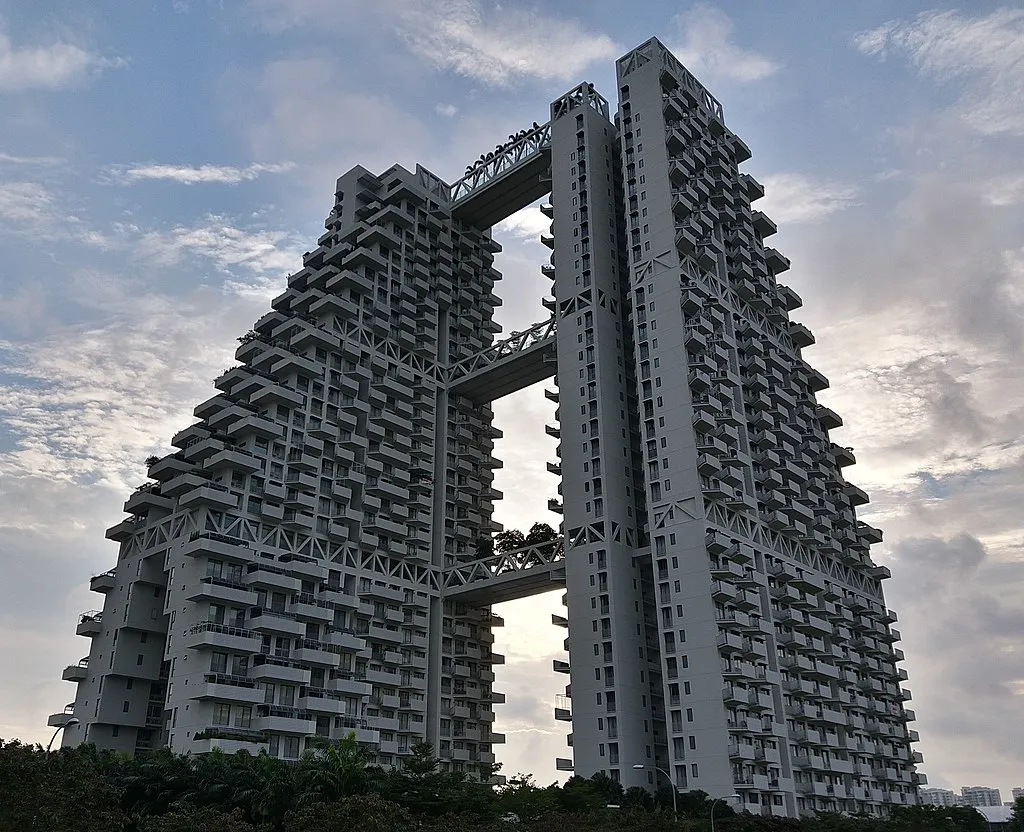
Sky Habitat is a residential complex in Singapore that incorporates innovative design elements to create a functional and attractive living space. The building features a unique “Habitat Matrix” design that creates sky gardens and communal spaces throughout the building.
The design also incorporates energy-efficient features such as natural ventilation, rainwater harvesting, and solar shading. The building’s design was able to overcome the challenge of limited space in a densely populated urban area, creating a sense of community and greenery in the heart of the city.
Via Verde, New York City:
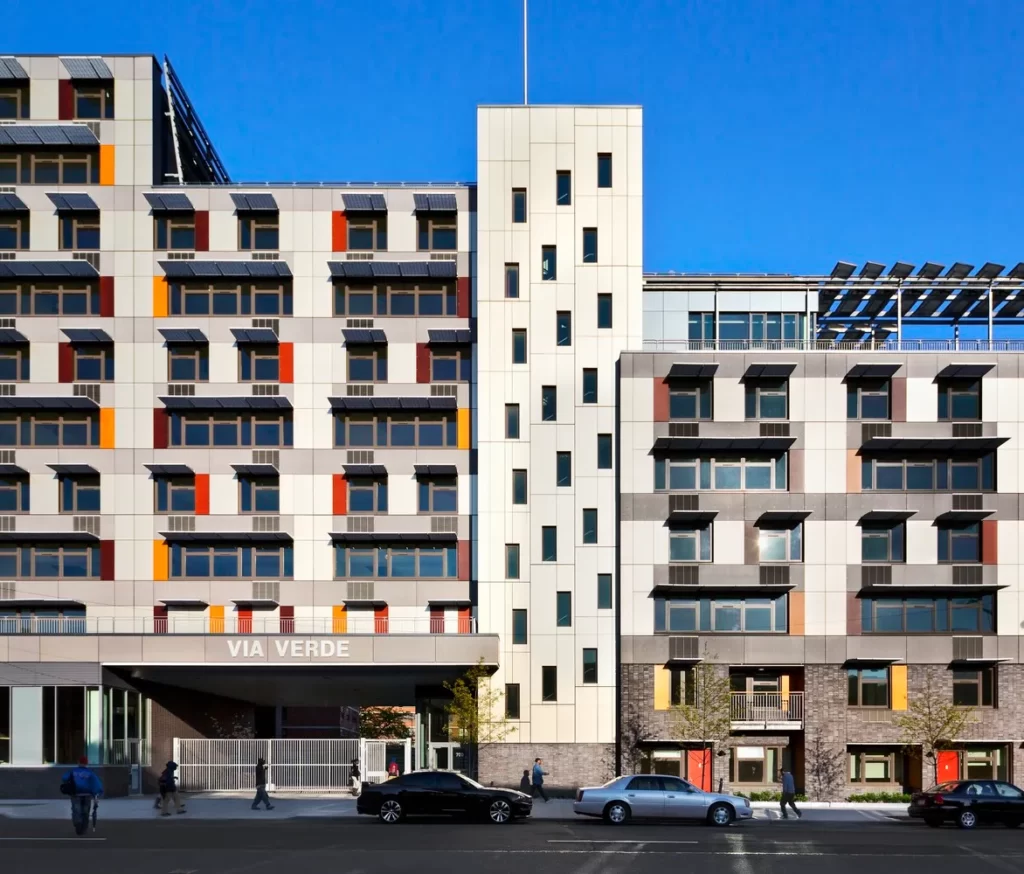
Via Verde is a mixed-use development in New York City that combines affordable housing with commercial and retail spaces. The building features a unique design that incorporates green roofs, gardens, and communal spaces to promote social interaction among residents. The building’s design was able to overcome the challenge of limited space in an urban area, creating a sustainable and community-oriented living space.
The Collective Old Oak, London:
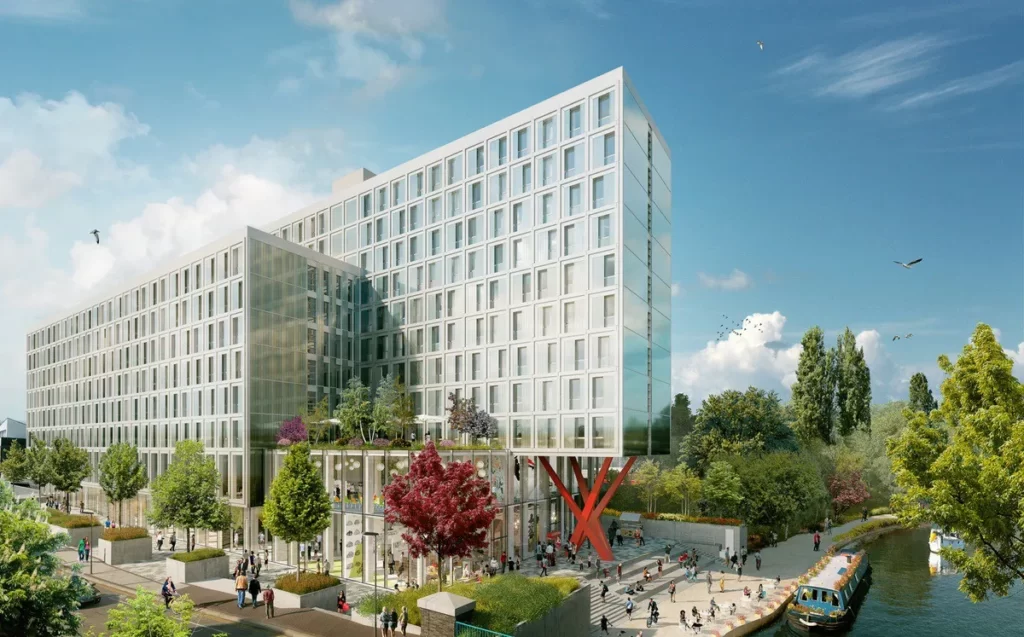
The Collective Old Oak is a co-living space in London that incorporates communal spaces, technology integration, and sustainability features to create a modern and attractive living space. The building features a variety of communal spaces, including a cinema, rooftop terrace, and shared kitchens, to promote social interaction among residents.
The building’s design also incorporates energy-efficient features such as rainwater harvesting and solar panels. The building’s design was able to overcome the challenge of creating affordable housing in a high-cost city, creating a sense of community and affordability for residents.
These successful group housing building designs all incorporate innovative design elements, communal spaces, and sustainability features to create functional and appealing living spaces. To apply these strategies to future group housing building designs, architects can prioritize the needs and preferences of residents, incorporate the latest technological advancements, and prioritize sustainable and energy-efficient features.
Additionally, architects can use innovative design elements such as green roofs, communal spaces, and mixed-use development to create a sense of community and promote social interaction among residents. By prioritizing these design elements, architects can create successful group housing building designs that meet the needs of residents and provide a sense of community and sustainability.
In India
There are also several successful group housing building designs in India that have incorporated key elements and latest trends to create functional and appealing living spaces. Here are three examples:
DLF Magnolias, Gurugram:
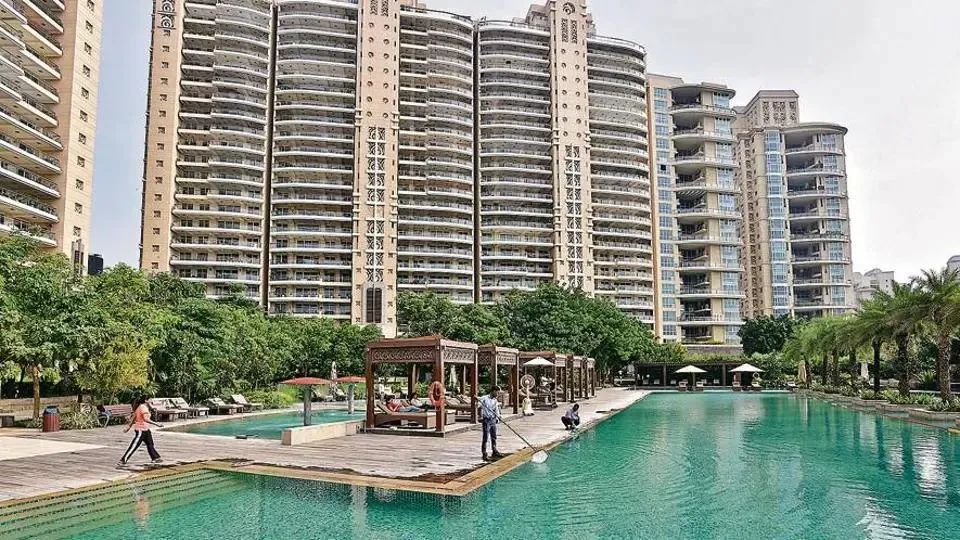
DLF Magnolias is a luxury residential complex in Gurugram that incorporates innovative design elements to create a functional and attractive living space. The building features large balconies, spacious interiors, and expansive green areas. The design also incorporates energy-efficient features such as rainwater harvesting and solar power.
The building’s design was able to overcome the challenge of creating luxury housing in a crowded urban area, providing residents with a sense of luxury and comfort.
Godrej Platinum, Mumbai:

Godrej Platinum is a residential complex in Mumbai that combines sustainable design with luxury living. The building features green roofs, solar power, and rainwater harvesting, as well as amenities such as a clubhouse, gym, and swimming pool. The design was able to overcome the challenge of creating sustainable housing in a crowded urban area, providing residents with a sense of luxury and environmental responsibility.
Brigade Orchards, Bangalore:
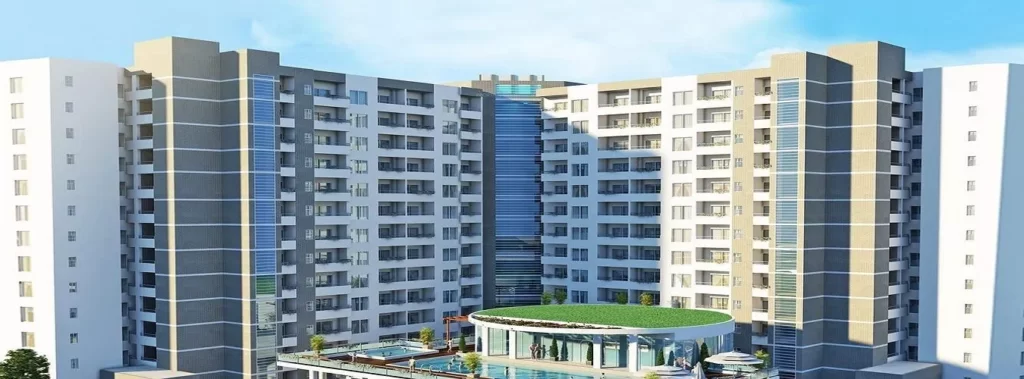
Brigade Orchards is a mixed-use development in Bangalore that combines residential units with commercial and retail spaces. The building features a variety of communal spaces, including a cricket pitch, swimming pool, and jogging track, as well as sustainable features such as rainwater harvesting and solar power. The design was able to overcome the challenge of creating a sense of community in a sprawling urban area, providing residents with a sense of community and sustainability.
These successful group housing building designs in India all incorporate innovative design elements, communal spaces, and sustainability features to create functional and appealing living spaces. To apply these strategies to future group housing building designs in India, architects can prioritize the needs and preferences of residents, incorporate the latest technological advancements, and prioritize sustainable and energy-efficient features.
Additionally, architects can use innovative design elements such as green roofs, communal spaces, and mixed-use development to create a sense of community and promote social interaction among residents. By prioritizing these design elements, architects can create successful group housing building designs in India that meet the needs of residents and provide a sense of community and sustainability.
7) Sustainability and group housing design
Sustainability is an increasingly important consideration in all aspects of architecture, including group housing design. Sustainable design aims to minimize the environmental impact of buildings while also creating healthy and comfortable living spaces for residents. In group housing design, incorporating sustainability is particularly important because these buildings have the potential to impact a large number of people.
Architects can incorporate sustainability into group housing design in a number of ways. Here are a few examples:
- Green roofs: A green roof is a roof that is partially or completely covered with vegetation. Green roofs help to reduce the heat island effect in urban areas, as they absorb heat and provide natural insulation. They also help to filter air and water, reducing pollution and improving air and water quality. Additionally, green roofs can provide residents with outdoor space and a connection to nature.
- Energy-efficient lighting: Energy-efficient lighting such as LED lights use less energy than traditional lighting, reducing electricity usage and lowering energy bills. Additionally, by using sensors and timers, lighting can be controlled to turn off when not needed, further reducing energy usage.
- Water conservation: In group housing buildings, water conservation can be achieved through features such as low-flow faucets, showerheads, and toilets. These features use less water, reducing water bills and conserving this important resource. Rainwater harvesting systems can also be installed to collect rainwater for irrigation and other non-potable uses.
- Solar panels: Solar panels can be installed on the roof of group housing buildings to generate electricity from the sun. This renewable energy source can significantly reduce the building’s reliance on fossil fuels and lower energy bills for residents.
- Passive design strategies: Passive design strategies include features such as natural ventilation, shading, and orientation to maximize natural light and reduce the need for heating and cooling. These strategies help to create comfortable living spaces while also reducing energy usage.
By incorporating these sustainability features into group housing design, architects can create buildings that are not only comfortable and functional but also environmentally responsible. Additionally, incorporating sustainability into group housing design can provide cost savings for residents, improve the health and well-being of occupants, and create a positive impact on the environment.
8) Future of Group Housing Building Design
The potential future of group housing building design is exciting, with a focus on sustainable and eco-friendly materials, the integration of technology for smart living, and the creation of more communal and shared spaces.
One significant trend in group housing building design is the use of sustainable and eco-friendly materials. Architects are increasingly using materials such as bamboo, recycled steel, and cross-laminated timber to reduce the environmental impact of building construction.
These materials are also durable and cost-effective, making them a popular choice for sustainable construction. Architects can prepare for this trend by keeping up-to-date with the latest sustainable materials and methods of construction, collaborating with manufacturers to create new sustainable building materials, and incorporating sustainable design principles into their projects.
Another trend is the integration of technology for smart living. The use of Internet of Things (IoT) devices, home automation, and energy management systems are becoming increasingly popular in group housing buildings. These technologies can enhance the quality of life for residents, improve energy efficiency, and reduce maintenance costs. Architects can prepare for this trend by designing buildings that can accommodate these technologies and working with technology companies to create custom solutions for group housing buildings.
Finally, the creation of more communal and shared spaces is a trend that is gaining popularity in group housing building design. Architects are creating communal spaces such as shared kitchens, dining areas, gardens, and co-working spaces to promote social interaction among residents. These spaces can also help to reduce costs, as residents can share resources and amenities. Architects can prepare for this trend by designing buildings with communal spaces in mind, considering the needs and preferences of residents, and creating flexible spaces that can be adapted to meet changing needs.
In conclusion, the potential future of group housing building design is exciting, with a focus on sustainability, technology, and communal living. Architects can prepare for these trends by keeping up-to-date with the latest sustainable materials and methods of construction, designing buildings that can accommodate new technologies, and creating flexible spaces that can be adapted to meet changing needs. By embracing these trends, architects can create successful and innovative group housing building designs that meet the needs of residents and promote a sustainable and interconnected future.
9) Conclusion
In conclusion, designing group housing buildings requires careful consideration of essential elements, latest trends, design challenges, and potential future developments. Architects can create successful and innovative designs by incorporating sustainable materials and design principles, integrating technology, and creating communal spaces.
The call to action for architects and designers is to approach group housing building design with a focus on the needs and preferences of residents. By doing so, they can create living spaces that are comfortable, functional, and enjoyable while also incorporating sustainable features to reduce the environmental impact. Ultimately, this will result in more successful and satisfying group housing communities for residents.